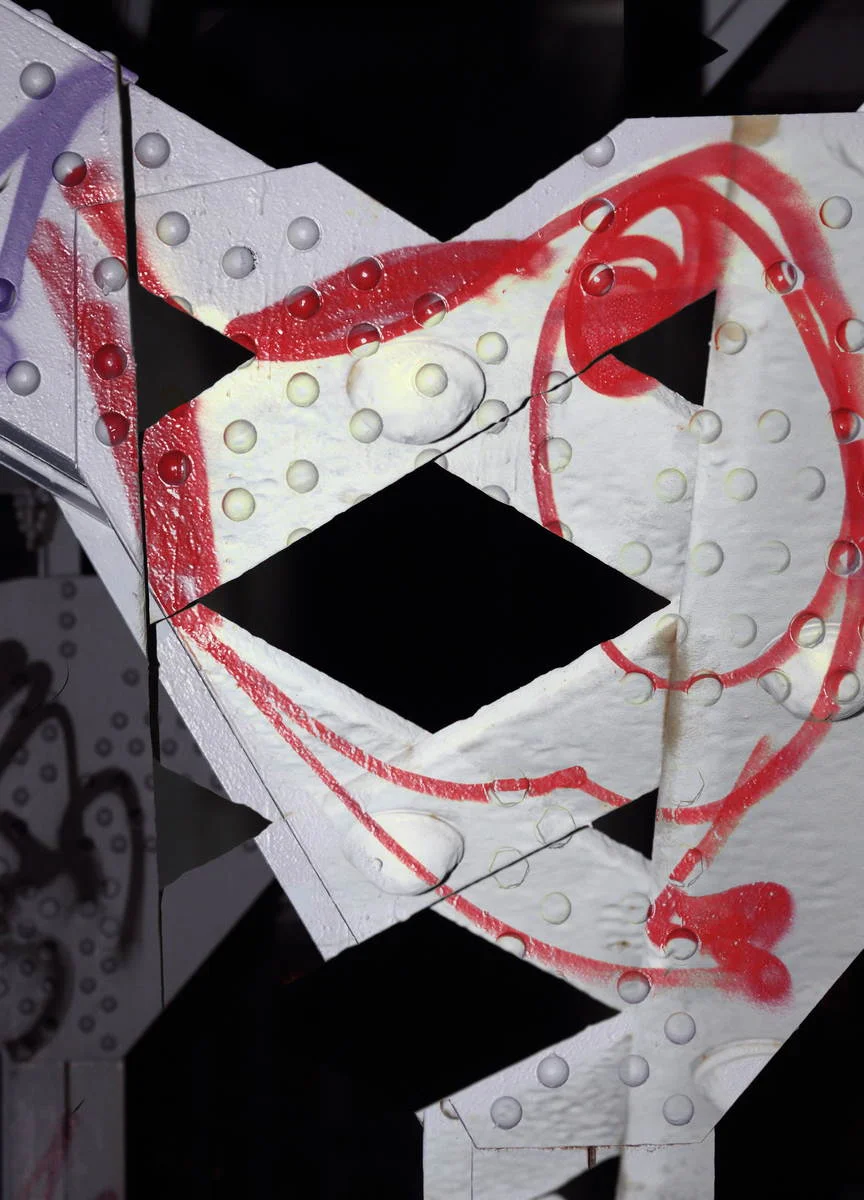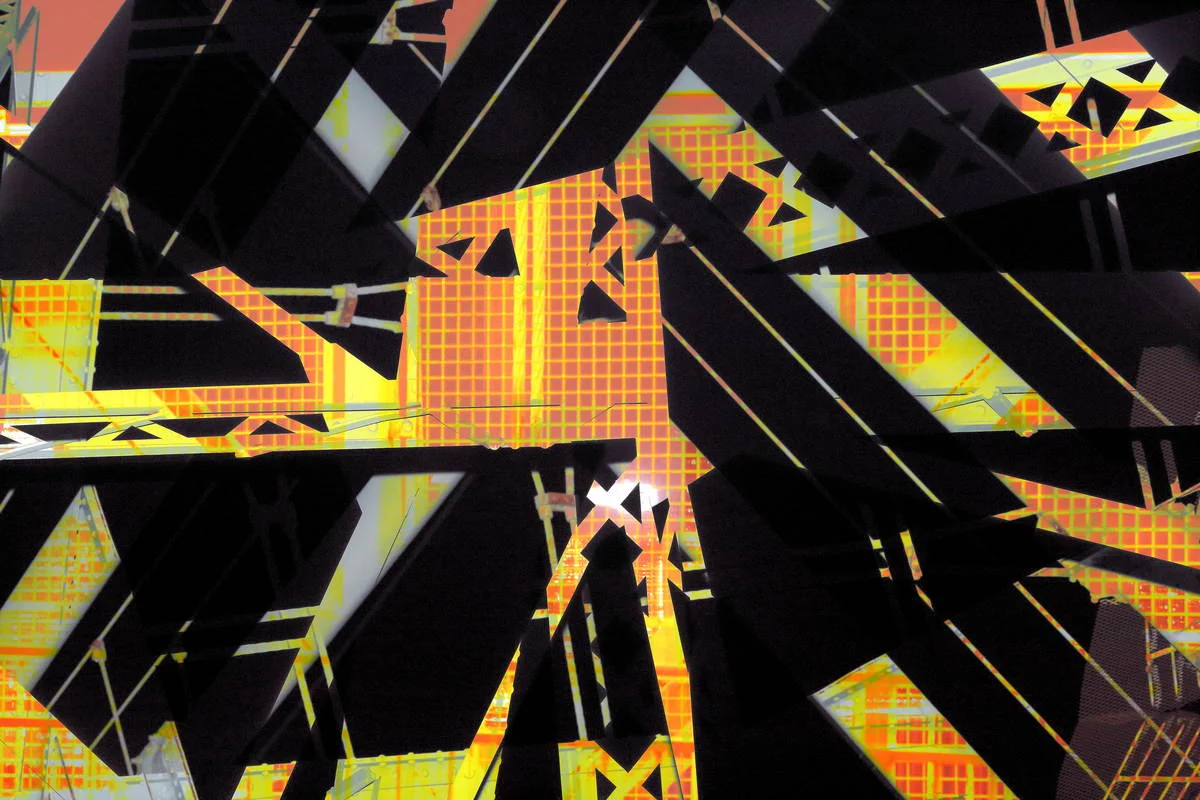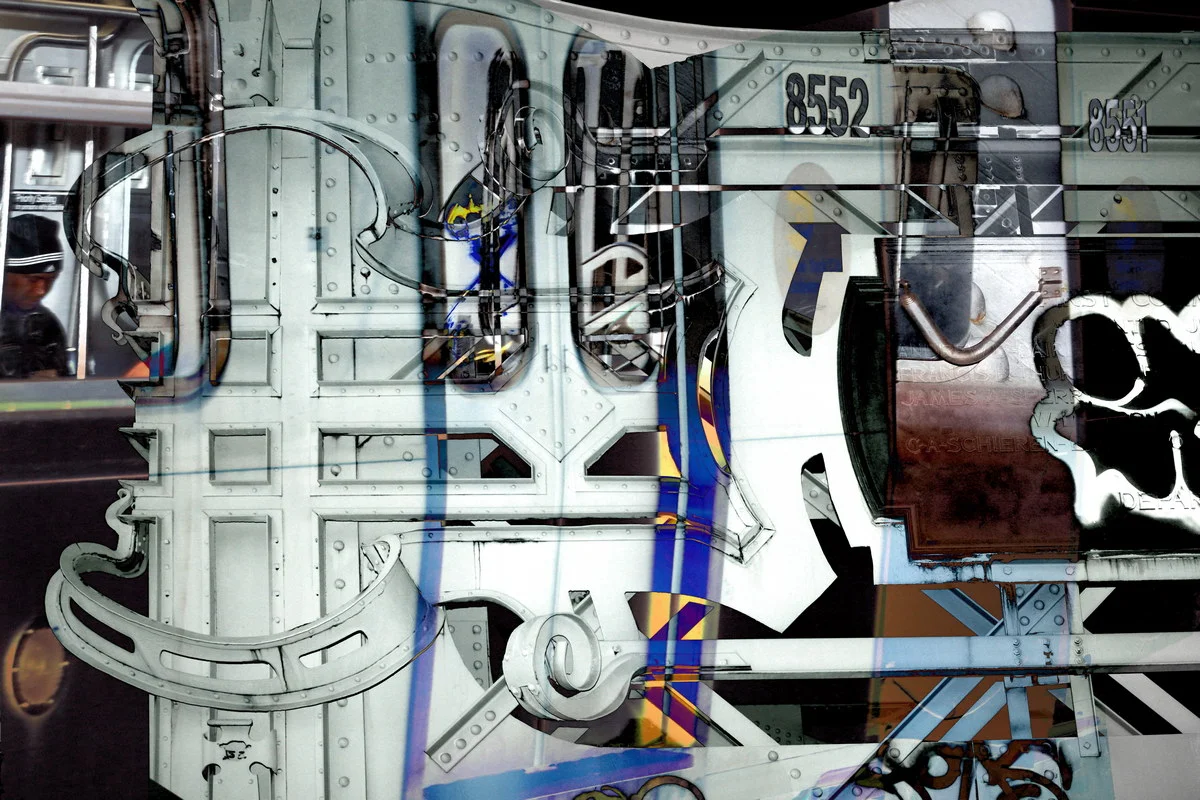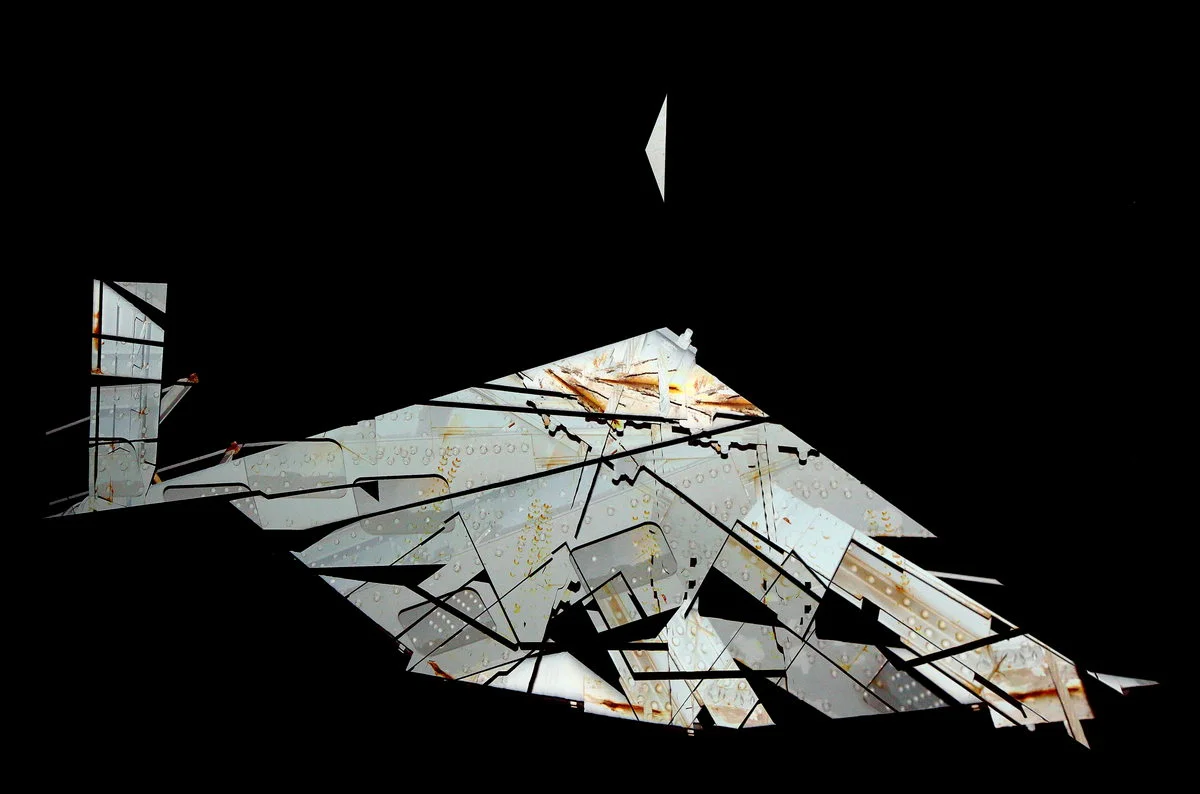Photographically, I was in such a rut in 2013 that viewers I respected and even I myself was bored with what I was producing. To shake off habit's damn dust, I learned to use the multiple-exposure module in my camera (now common), then developed it to suit a particular scene. I made input images with a flash on the Williamsburg Bridge at night, so that in each, girders stood out starkly against gulfs of black. To make an output (final) image, I had the camera compare corresponding points on the input images and use the darkest; black at the corresponding point on any input made for black there in the output. Of course, the blacks between girders ripped through scenes, leaving forms that, before the exposures, were largely unpredictable, most of them just messes, but a few, structured meaningfully. Some obsessive weeks on the bridge yielded enough keepers and cohesion for a portfolio that gained me triumphant admission to Soho Photo Gallery in June 2014 and my first show there in January 2015.
This photograph, like others in this portfolio and some in others, relies on pareidolia, a desire "to perceive a specific, often meaningful, image in a random or ambiguous visual pattern" (Webster's Unabridged), as one door into imagination.
More pareidolia. The man appeared to me only while I was editing the image, well after I had made the exposures, so that it is hard to pin down the role of intent in its creation. The photograph faithfully represents some visual facts vital to its overall effect; rusty girders look like that because photographs of girders went into the image. However, the figure appeared to me as if by its volition, in any case not as some creature of post-production guided by calculating intent. I added nothing to this image out of the camera, although I did remove some junk from his back, to make a photograph presenting visual facts *and* appealing to my and viewers' imaginations, especially those whose taste runs toward Dada, surrealism, or play.
Pareidolia works best (or most often, anyway) when we can read faces into (or out of?) otherwise-randomness. This graffito, because locally famous (I've been told), also proclaims "Made in Williamsburg," demonstrating photograph's unique power of thisness.
If the night and technique can generate figures and faces, why not a landscape or four?
The car and its driver merged with the bridge without my intending--or even, originally, my knowing; I fired the flash reflexively as he was zooming by in his car and discovered him only later, while editing the image. Is he therefore less aesthetically valid or more? Why?
Unlike all the other photographs in this portfolio, this one is a creature of my intent as implemented in post-production. All the others, made in-camera on the scene, relied heavily on chance, making me grunt, "Oooh," "Ah," or "Wha?" when they came up on the camera's screen. Thus the *others* confirm G. B. Shaw's remark: "A photographer is like a cod, which produces a million eggs in order that one may reach maturity.” Post-production is more efficient than cod, but at least in this portfolio, it led to no other image worth showing (of the many hundreds made).
When I adjusted the color balance to compensate for the aggressive yellow of the sodium street lamps, this image occurred.
No product of my intent, this image stands or falls in catalyzing possibilities, also metaphors, in viewers' minds, as it has in mine. That's a general purpose of this portfolio: to show images whose meanings, unmoored from my intent, arise and change in viewers' minds as they wish and play.
a thrusting dancer?
(but why assume movement?)
weapon brandished?
hummingbird mechanized and overdriven?
open Swiss knife leaping?
Photographs of people who place themselves in meaningful spaces and patterns, of "menshen in matrices," has long been a theme of mine, and the technique developed for the bridge generates matrices galore. Here, the tradition and the technique converge.
After making a flash exposure that left black voids among the girders, I was looking for a scene that the voids would tear into, when a subway train thundered by, and my shutter finger twitched. Photography can exploit serendipity. Uniquely? The face of the young, innocent-looking girl appears slashed by a girder, and the train is so surrealistically impossible and ominous that I take this image as a scene from a nightmare, but my interpretation is just as after-the-fact as anyone else's.
Some viewers -- prompted, they have said, by the ray of force emitted by the "ship" left center and aiming down right -- have blurted something about warfare in space. Others see an archipelago, and just one, a landscape reminiscent of a painting by Yves Tanguy. Why not surrealism?
Another Rohrschach exercise.
This image pushes the portfolio's point toward an extreme.
If the triangles right and left were -- somehow -- directing the structured rhombus, then...
















This photograph introduces viewers to the group; to the scene, still recognizable as on a bridge, and to the style, readable as using the bridge's structures.